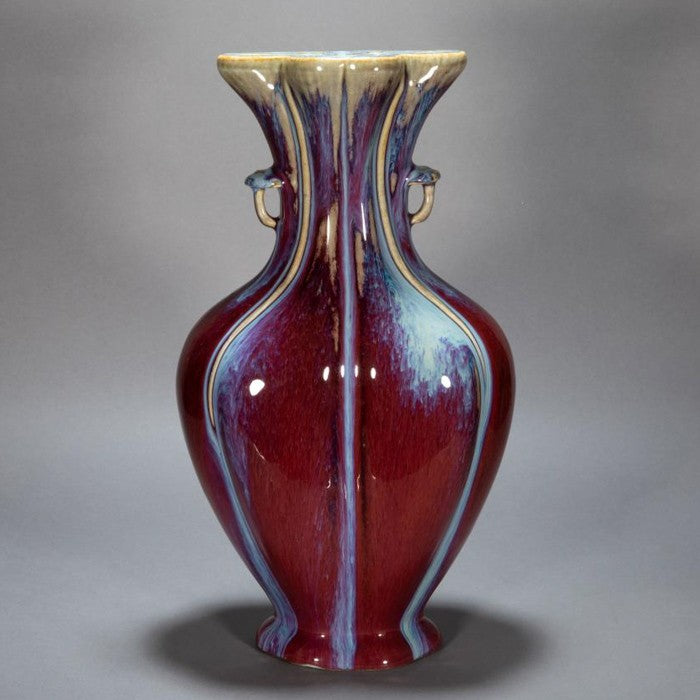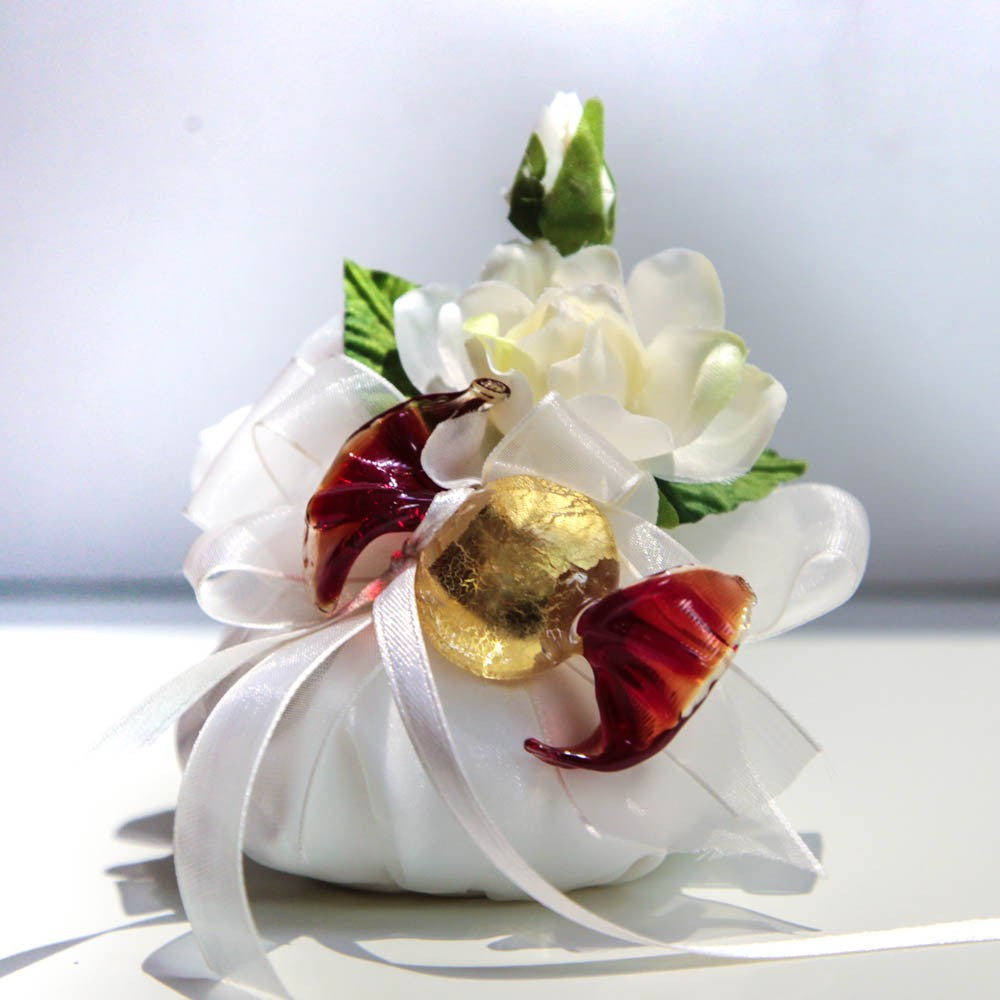Today we are led to think that Chinese glass production is limited to approximate copies of Occidental art glass.
The truth is that artistic glass has been worked in China long before Western influences arrived.
The beads, amulets and funeral ornaments produced in the ancient Cina shows that the glass was treated as a semiprecious stone, to be chiseled, carved and polished as a gem; and glass was cast but not blown.
Towards the end of the seventeenth century, however, China was exposed to the European concept of blown glass.
A group of Jesuit missionaries apparently traded their knowledge of Venetian glass for the opportunity to interest Emperor K’ang Hsi (1662-1722) in their religion.
Whether the Emperor was influenced by their religion may be doubted, but he was immediately impressed by the glass they produced, and ordered a factory to be setup within the palace boundaries in Peking.
Chinese blown glass of that period are remarkably Venetian style, having wrythen bowls with stringing and simple lattimo inlay.
These surviving pieces also show the issue that seems to have plagued every introduction of a new metal around the world. The troublesome alkali in glass appears to be barium which, although chemically similar to sodium, is much heavier and may have confused Jesuits as to the quantity management.
Once started the Chinese industry was quick to develop, and the although some other blown European styles followed they where not very simply copies but distinctively Chinese in character, since they always applied Chinese artistic tradition to the European techniques.
The Chinese produced miniature thick-walled blown bottles in a variety of rich colors, with cameo and intaglio (cut) applied using grinding techniques. Snuff bottles were the most typical of the output, but flasks, bowls and vases were also made.

Throughout the eighteenth century the Peking glass industry continues to grow.
Among the most remarkable of its products were polychrome enamel pieces and cameo-cut overlay vases depicting flowers, birds and figures, usually with a dense white body reminiscent porcelain and bright, vibrantly colored overlays, one of the most popular colors being imperial yellow.
Both transparent and opaque colors were used and so was snow flake glass which had air bubbles.
Interior painting on small clear glass bottles was used to demonstrate the artist’s skill and patience. It was Chinese cut overlay glass that most impressed Emile Gallé when he visited the South Kensington Museum (now the Victoria and Albert Museum) in1872; his work shows the influence of the Chinese technique.
In the twentieth century, many traditional production skills were lost due to the Chinese cultural revolution.
Subsequently, in recent decades, the new industrial policy in China has encouraged the opening of improvised companies, but with low-cost labor.
The main purpose is to attack the market with approximate copies and low quality, focusing on price and quantity at the expense of almost always very poor quality.
Bibliography:
The History Of Glass




1 comment
Pierre
Hi,
Near me, there is an italian guy advertising “murano glass , hand made”… i’m in Pezenas, south ofFrance …. i went in Murano 10 years ago but didn’t remember the Venice island in Pezena !
regards
Leave a comment
All comments are moderated before being published.
This site is protected by hCaptcha and the hCaptcha Privacy Policy and Terms of Service apply.